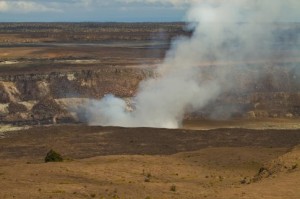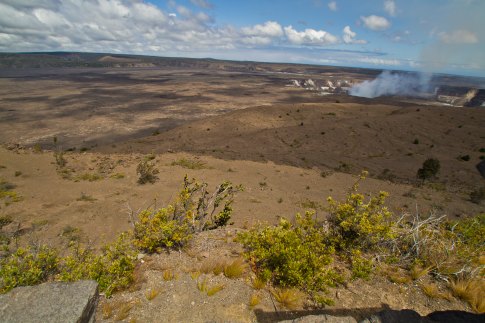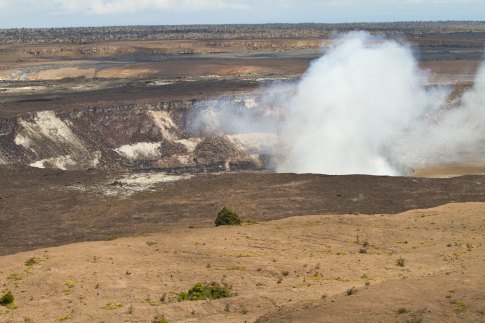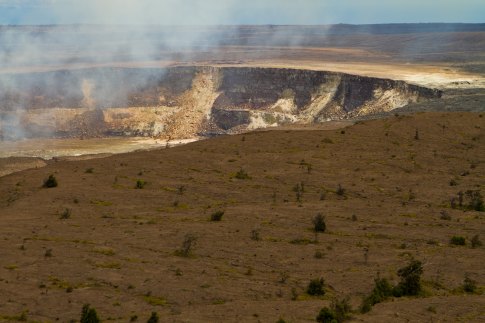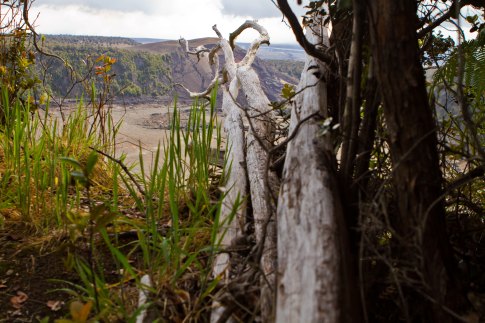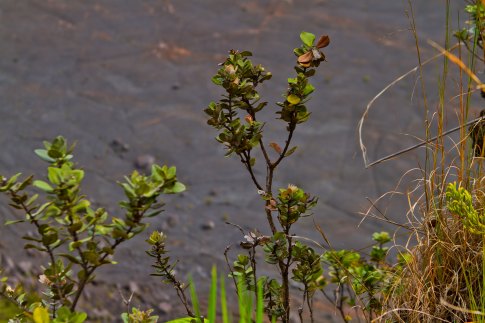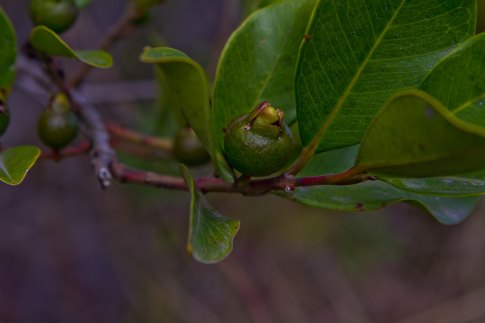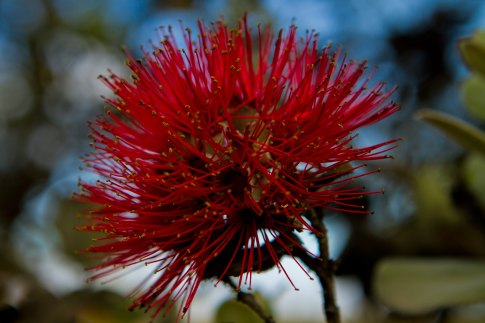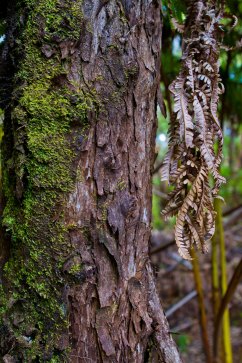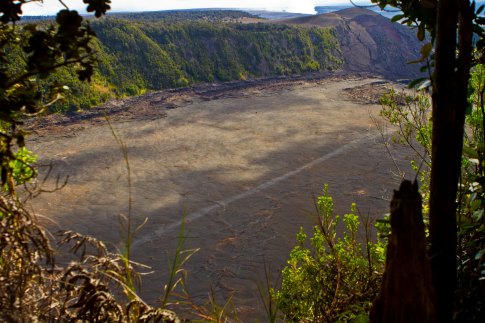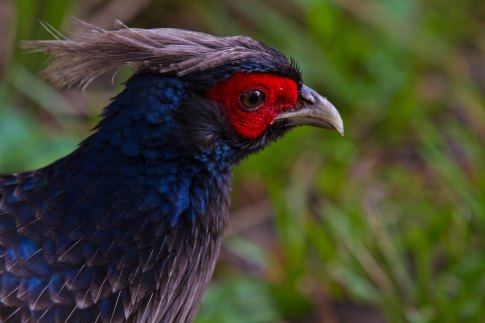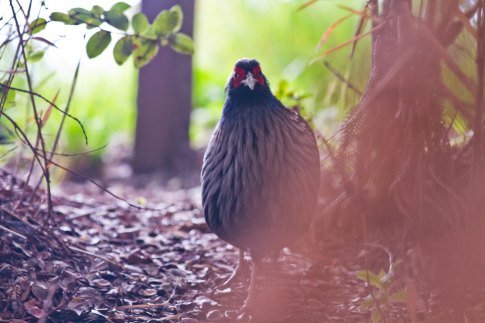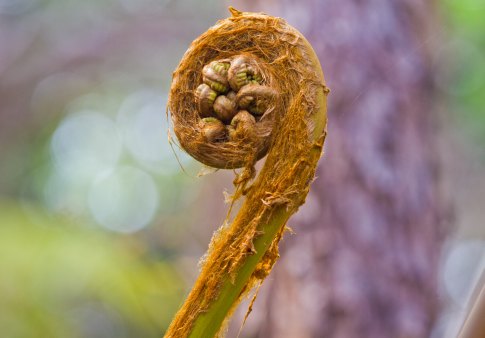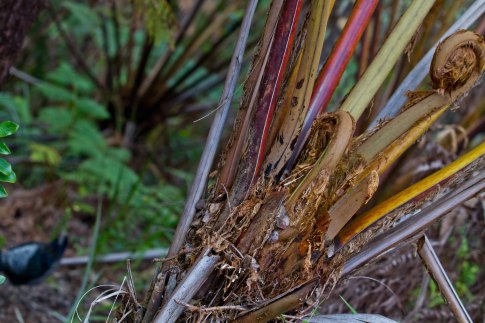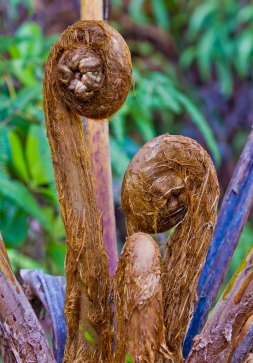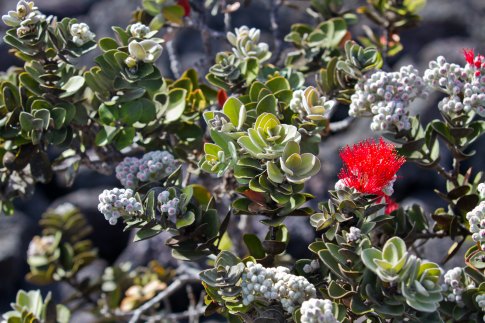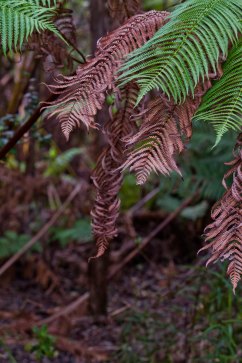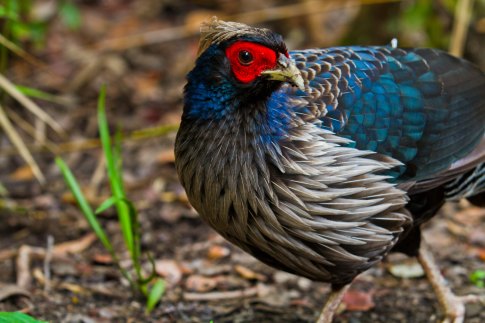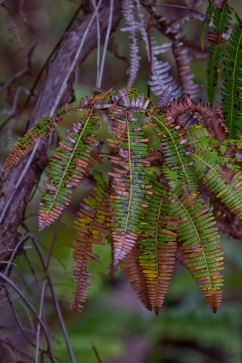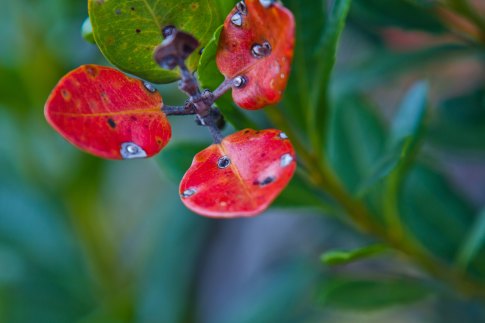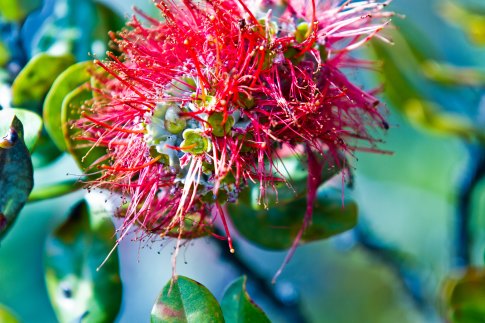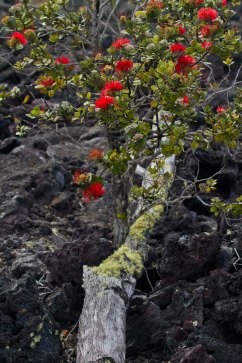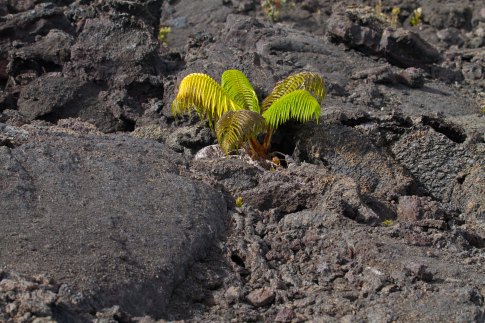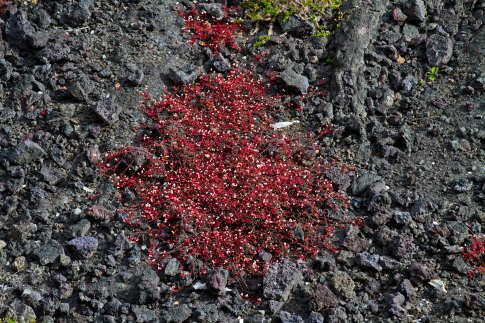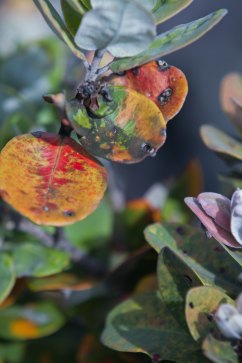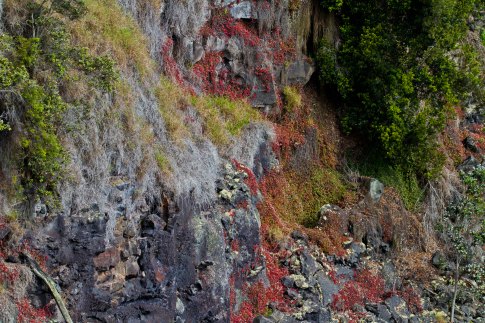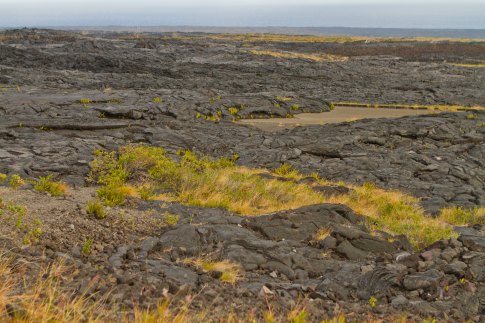When you don’t live near a volcano, they don’t impact your life. In places where they do and if they also happen to be active, like in Costa Rica and Hawaii, you learn a lot more about them, just like us San Franciscans know a bit more about earthquakes than New Yorkers do for example.
The photo to the left was taken at Hawaii Volcanoes National Park in late May, which as you can see is always erupting. While the national park is renowned for its volcanic significance and it’s a big reason why I wanted to visit, it is also one of the most fascinating biologic landscapes in the world.
They have two active volcanoes in the park, Mauna Loa and Kilauea. Kilauea, which is the “main attraction,” of the park emerged from the ocean perhaps 600,000 years ago and has been active ever since and remains perhaps the most active volcano in the world.
What’s interesting today about Kilauea is that it is actively erupting from two locations: at the summit from Halema’uma’u Crater which is easily viewed from many vantage points in the park; and from the remote east rift zone vent of Puu Oo. Puu Oo has been going nonstop since 1983, and occasionally has flows that reach the ocean…none presently, but the flows are pooling up along the coastal plain, according to Jessica Ferracane, one of my hosts. Outside the island’s volcanic personality and its misty cloak of rain forest lies a wide range of species and vegetation.
Located more than 2,000 miles from the nearest continental land mass, the Hawaiian Archipelago is the most geographically isolated group of islands on Earth. The Park sits on the southeastern edge of the youngest and largest island stretching from the summit of Mauna Loa at 13,677 feet to sea level.
Here, in this location, it has the ability to protect a wide diversity of ecosystems and habitat for numerous native Hawaiian species such as carnivorous caterpillars, happy face spiders and colorful Hawaiian honeycreepers.
Of course, I didn’t see any of those on my hikes, but then again, I’m not sure I wanted to run into a happy face spider even if I had a guide with me who had a list of all of their benefits. Let’s just say that I’m just not a spider girl nor am I into snakes, but luckily Hawaii doesn’t have any of those, so its one less thing to worry about when you’re out in the brush and rainforest.
How’s this for a cool factoid? Hawaiian plants and animals began to evolve over 70 million years ago in nearly complete isolation and over 90% of the native terrestrial flora and fauna in Hawai`i are found only in the Hawaiian islands. This level of endemism surpasses all other places on Earth— even the Galapagos Islands, which really surprised me having visited. (see my video flying into the Galapagos, my interview with our guide Carlos Carrion and a post on its lush vegetation).
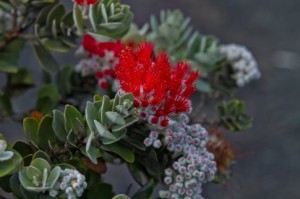
There are 600 species of plants (which include trees) in Hawaii Volcanoes National Park. Of those, more than half — 321 — are endemic to Hawaii, and are found nowhere else on earth. In 1987, Hawai‘i Volcanoes was designated by UNESCO as a World Heritage Site due in large part to the high number of endemic species it protects. This year, the park celebrates 25 years of World Heritage. Isolated by thousands of miles of ocean and cut off from the rest of the world for thousands of years, Hawaii boasts one of the highest rates of endemic species.
The endemic ohia lehua tree (right), which is prevalent throughout the park, is especially unusual and interesting because it is among the very first plants to colonize new lava flows. Its seeds quickly take root in earth cracks, and the wind and rain provide enough organic matter and nutrients for it to get its first lease on life.
Despite the fact that its positioned well and can protect many endemic species, flora and fauna, like every natural place in the world, they face threats. Declining habitat outside Park boundaries, invasive plants, bird malaria, wildfires, feral cats and pigs, and introduced goats, sheep, rats, mongoose, ants, and wasps are all taking a toll. While insects and plants are an integral part of the park, the biggest driver and reason people flock to it is because of its unique volcanoes. 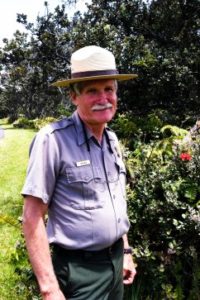
I spent time with park ranger Jim Gale (his official title is Chief Division of Interpretation), who is more passionate about volcanoes than anyone I’ve ever met. When I asked him why he took the job at the park, his reason was precisely volcanoes. Jim has a passion for them and as he tells stories about the ones in the park, his bright blue eyes light up, his arms start waving about, his voice gets elevated and he has a beaming smile.
His enthusiasm and passion for volcanoes and the area made me even more eager to dive right in and explore the park in what little time I had. My mind started racing: I had to take photographs of the volcano of course, hike down into it, find a stream to hang out near, find some colorful birds, check out the diverse fauna and plants on side trails, the list kept going.
I find that I never have enough time in national parks, largely because if you see something magical, you often want to see it during a different time of day (early morning, sunset or when there aren’t any people around). It rained for a stint while I was in there, but luckily it was short and came after a trail hike I did along the way.
Worth doing while you’re there is Crater Rim Drive, a 10.6-mile scenic loop road that takes visitors around the caldera rim and onto the caldera floor. The drive includes a number of overlooks as well as more developed areas, like Volcano House Hotel, Jaggar Museum, and Thurston Lava Tube.
The road follows the north bluff of Kīlauea Caldera, past Kīlauea Military Camp and the Volcano Observatory on Uwēkahuna Bluff. En route, you can view Halemaʻumaʻu, the large crater within the Kīlauea caldera that, up until the 1930s, was quite active. From Halemaʻumaʻu parking lot, you can then go to the smaller craters of Keanakākoʻi and Kīlauea Iki, through a tree fern forest, and past Thurston Lava Tube, which is a popular stop.
Along its route, Crater Rim Drive passes through a variety of contrasting natural settings, such as lush forests of ohia lehua trees and hapuʻu tree ferns, high scrub desert, and barren, smoking lava fields. Have a look at some of the natural beauty I took in on my journey, which included a couple of trail hikes:
I love finding unusually friendly and colorful birds whenever I’m on a nature hike. The park has plenty: it is home to 40+ species of native birds, 1,100+ species of native invertebrates and one terrestrial mammal (Hawaiian Hoary Bat). Also, three marine animals, the hawksbill turtle, green turtle, and Hawaiian Monk Seal use beaches in the park. Of the endemic birds, the apapane, a type of Hawaiian honeycreeper, is the most common native bird seen by visitors in the park. Its success is in large part due to the park’s long-standing efforts to eradicate feral pigs from the summit area. Pigs tear down hapuu ferns and root into the top soil, creating receptacles and ponds for standing water. The water breeds mosquitoes, which carry avian malaria that wipe out endemic birds. In the past, the native birds had no natural defenses against the mosquitoes and either perished or had to adapt to much higher elevations where mosquitoes cannot live.
Great Day Hikes & Trails:
There are a number of trails you can take, from easy and moderate to more difficult and quite challenging. The Kilauea Iki Trail will take you through the rain forest to Kilauea Iki’s frozen, but still-steaming crater floor. You can experience lava landscapes from the 1969 to 1974 Mauna Ulu flowers. The hike will take you by lava trees and you can climb up over 200 feet to the top of a forested hill, known as the hairy hill. Depending on the sky, you might be able to see Pu’u ‘O’o cone in the distance.
A more difficult trail is the Crater Rim Trail, where you’ll move from shady forests with birds, landscapes, lava trees, stream vents, cinder fields and deep craters. The Pu’u Loa Petroglyphs Trail is a great one for history buffs since you can see a sacred and awe-inspiring gallery of petroglyphs, which document the life and culture of native Hawaiian people.
The Devestation Trail takes you across cinder fields from the famous 1959 eruption. The Kipukapuaulu trail is a 4,000 year old closed canopy forest, the Earthquake Trail gives you a spectacular view of Kilauea Caldera from the Waldron Ledge overlook and then continues on to Kilauea Iki Crater. The End of Chain of Craters Road (what a name), provides outstanding views of cliffs and windswept coastline. I didn’t do this one but they told me that there’s great star gazing at night.
The Sulphur Banks Trail is a great walk if you want to see more “thermal” than trees. Also known as Ha’akulamanu, this unusual place, with steaming cracks and colorful mineral deposits, has been famous for birds and healing vapors.
For more posts on Hawaii, check out this section. To experience nature, botanical gardens and rainforest, check out this post. For more on Hawaii and food/wine only, go here. For Hawaii and lodging, here. For more on Hawaii and arts, go here. All photos by Renee Blodgett.

Renee Blodgett is the founder of We Blog the World. The site combines the magic of an online culture and travel magazine with a global blog network and has contributors from every continent in the world. Having lived in 10 countries and explored nearly 80, she is an avid traveler, and a lover, observer and participant in cultural diversity.
She is also the CEO and founder of Magic Sauce Media, a new media services consultancy focused on viral marketing, social media, branding, events and PR. For over 20 years, she has helped companies from 12 countries get traction in the market. Known for her global and organic approach to product and corporate launches, Renee practices what she pitches and as an active user of social media, she helps clients navigate digital waters from around the world. Renee has been blogging for over 16 years and regularly writes on her personal blog Down the Avenue, Huffington Post, BlogHer, We Blog the World and other sites. She was ranked #12 Social Media Influencer by Forbes Magazine and is listed as a new media influencer and game changer on various sites and books on the new media revolution. In 2013, she was listed as the 6th most influential woman in social media by Forbes Magazine on a Top 20 List.
Her passion for art, storytelling and photography led to the launch of Magic Sauce Photography, which is a visual extension of her writing, the result of which has led to producing six photo books: Galapagos Islands, London, South Africa, Rome, Urbanization and Ecuador.
Renee is also the co-founder of Traveling Geeks, an initiative that brings entrepreneurs, thought leaders, bloggers, creators, curators and influencers to other countries to share and learn from peers, governments, corporations, and the general public in order to educate, share, evaluate, and promote innovative technologies.

